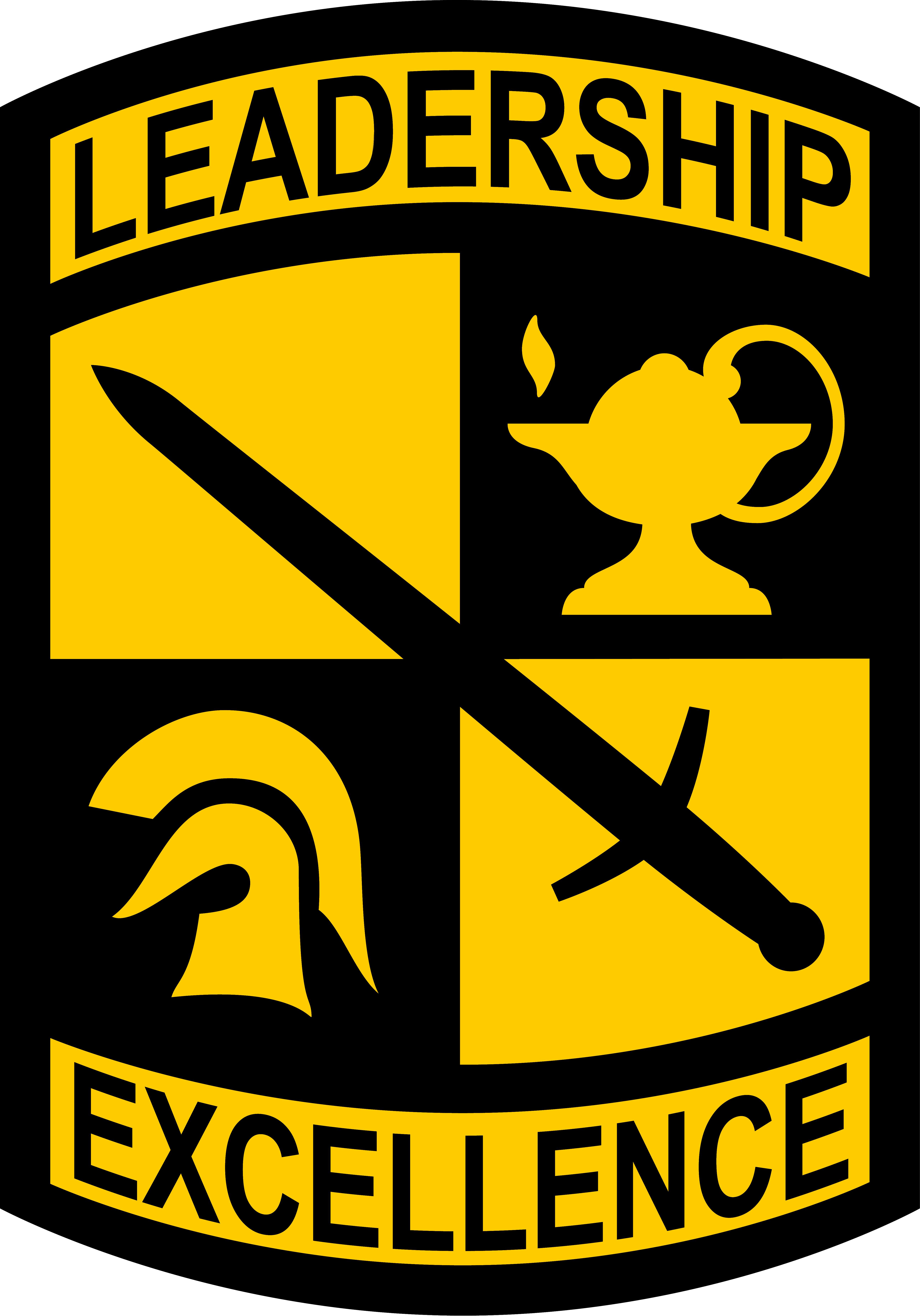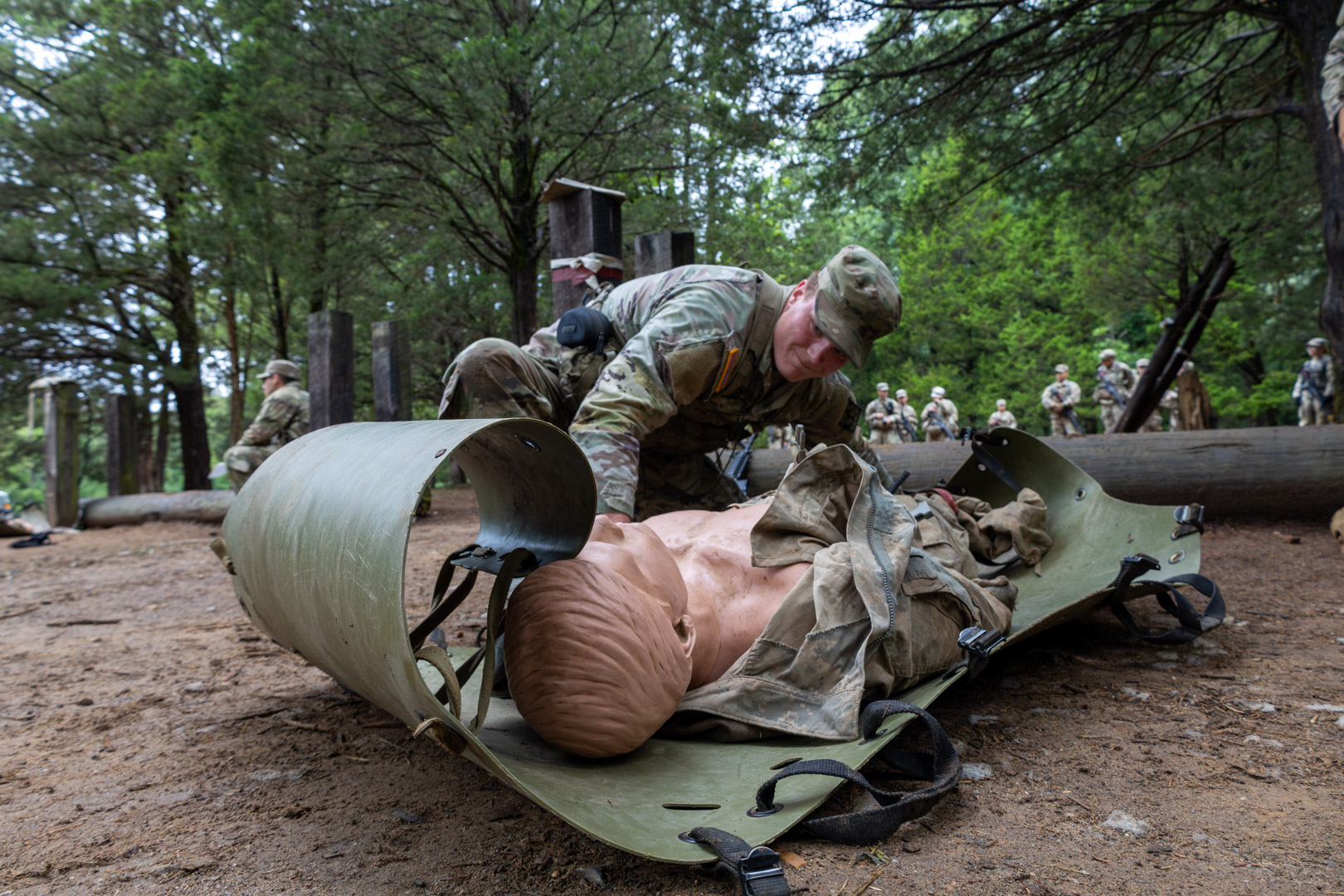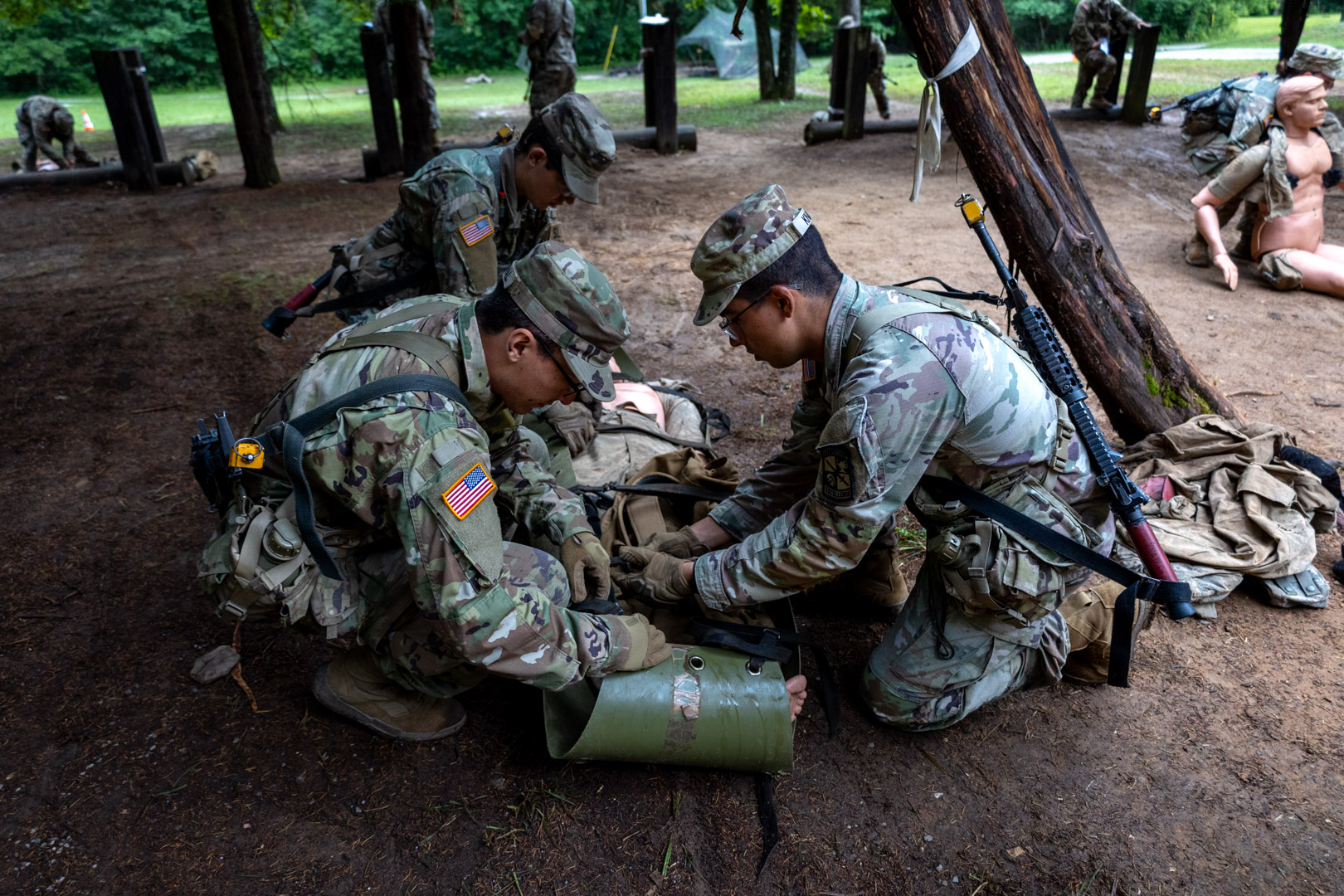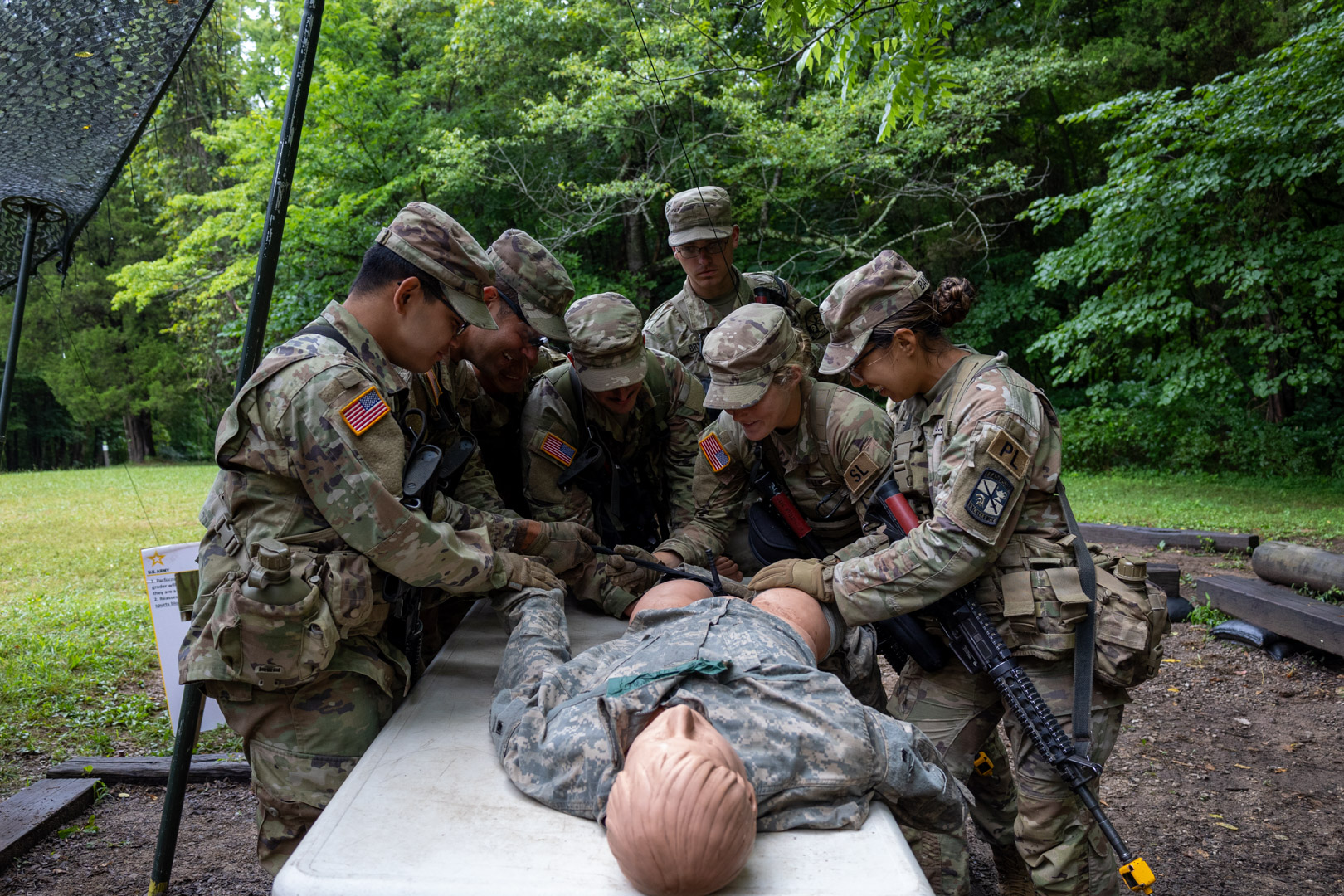FORT KNOX, KENTUCKY– In emergencies, panic is a luxury Soldiers cannot afford. From gaping gunshot wounds and blistering burns to obliterated bones and traumatic brain injuries, emergency first aid response is imperative to saving a life.
First-aid training transforms Cadet Henry Rehr, James Madison University, from a college student into someone prepared to act in a medical emergency.
“We’re learning the ropes on everything from calling MEDEVAC to properly applying tourniquets,” Rehr said, highlighting the importance of attention to detail, especially with military radio protocols.
Like most Cadets, the responsibility of being a leader resonates deeply with Rehr. “As future officers, we’re entrusted with the well-being of our Soldiers,” he said. “This training equips us with the knowledge to stabilize them until they receive advanced medical care.”
Cadets test their first-aid skills in simulated scenarios mirroring real-world situations they could encounter. The Cadets at CST commend this approach. “It gives us the confidence to handle minor injuries ourselves, on the spot,” Rehr said.
For Rehr, the importance of first-aid training was planted before his time at CST. He recounted an incident at his university where the Army 10-Mile Team sprang into action after a building explosion. They provided first aid and coordinated emergency services until help arrived. “It’s a powerful reminder that even with limited training, Cadets can make a real difference,” he said.
This sentiment is supported by Cadet Manuel Schwarzen from East Tennessee State University. Schwarzen, a former lifeguard who has performed real-life rescues, stresses the importance of muscle memory. “Training under pressure prepares you to react instinctively in an emergency,” she said.
However, CST’s first-aid program goes beyond memorizing steps. It simulates real-world situations to push Cadets. Schwarzen describes her experience: “The second station has been the most physically demanding. We have to drag a simulated casualty uphill, replicating the exertion of a real emergency.” The simulated weight represents the average Soldier (around 180 lbs), giving Cadets a realistic experience.
Stations like these also strengthen Cadets’ mental preparedness. “The physical exertion of dragging the casualty makes you truly consider the situation’s urgency,” Schwarzen said. “It reinforces the importance of acting quickly to get help to the injured person.”
Schwarzen sees first-aid training as crucial for all Soldiers. “Everyone needs a baseline understanding of how to deal with emergencies,” she said. “This course helps us not only physically prepare for emergencies but also mentally prepare by staying calm under pressure.”




